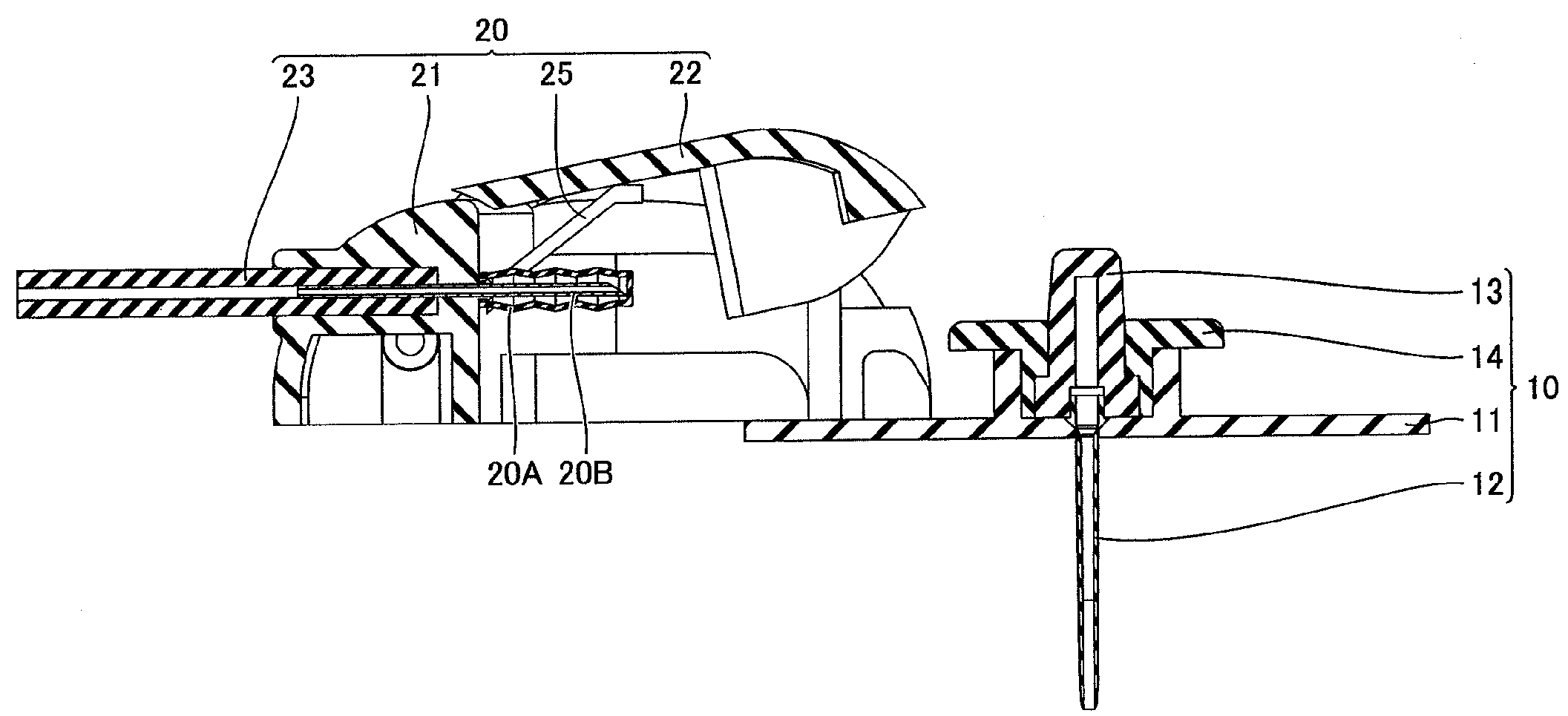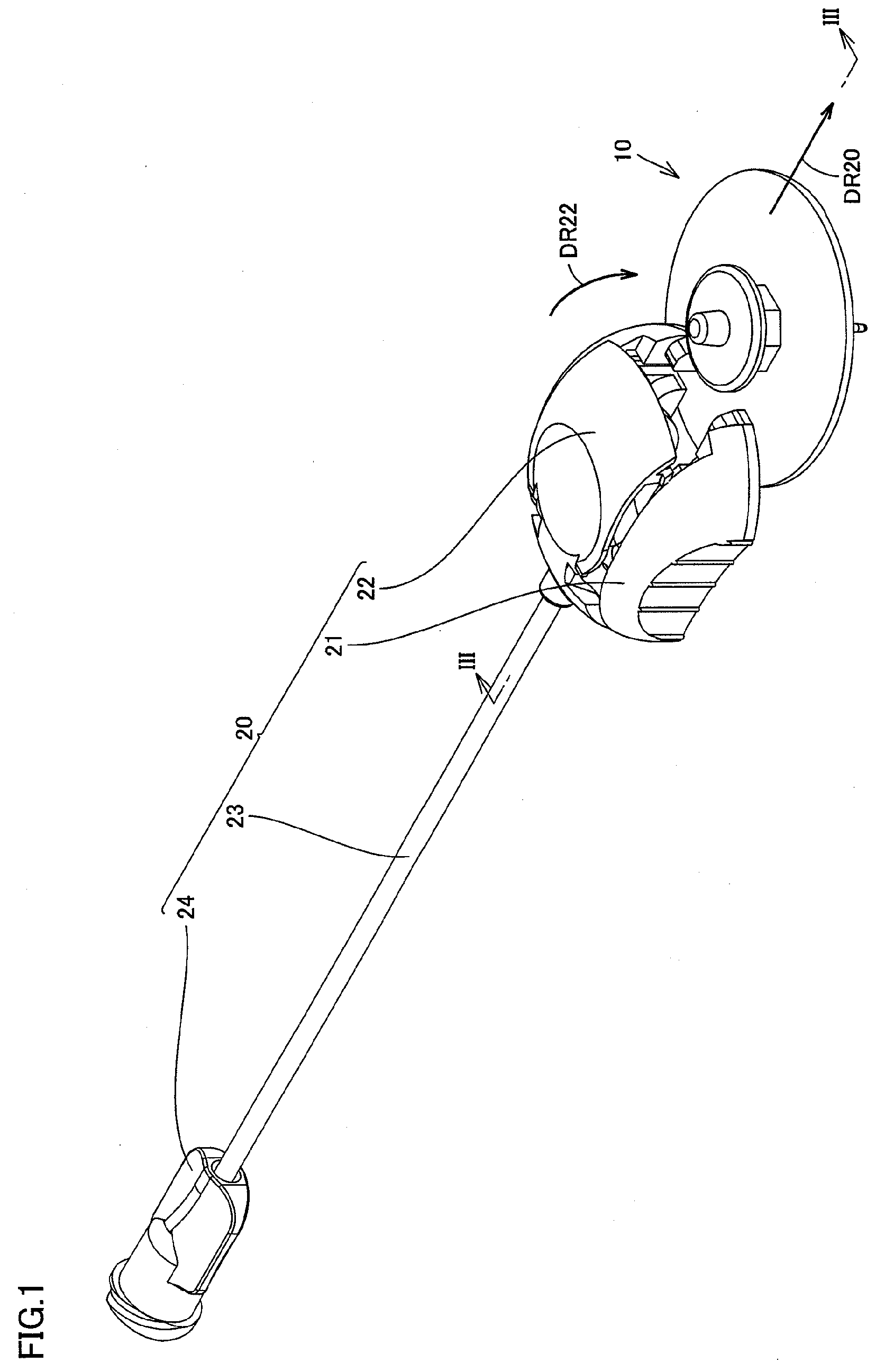Subcutaneous infusion device
a technology of infusion device and subcutaneous injection, which is applied in the direction of medical devices, infusion needles, other medical devices, etc., can solve the problems of reducing the convenience of patient life, requiring delicate operations, and reducing sensation, so as to achieve the effect of easy detachment/attachment of coupling parts
- Summary
- Abstract
- Description
- Claims
- Application Information
AI Technical Summary
Benefits of technology
Problems solved by technology
Method used
Image
Examples
first embodiment
[0081]FIG. 1 is a perspective view that shows a state prior to attachment of a coupling member of a subcutaneous infusion device according to a first embodiment to an indwelling member. FIG. 2 is a perspective view that shows a state where the coupling member of the subcutaneous infusion device is attached to the indwelling member.
[0082]With reference to FIGS. 1 and 2, a subcutaneous infusion device according to the present embodiment is used for continuous subcutaneous insulin infusion (CSII), and configured to include an indwelling member 10 and a coupling member 20. Indwelling member 10 is a member for being secured at a surface of the body of a patient when continuous subcutaneous insulin infusion is carried out. Coupling member 20 is a member for being detached / attached as needed from / to indwelling member 10. In other words, when insulin is subcutaneously infused, coupling member 20 is coupled to indwelling member 10, and when infusion of insulin is suspended (e.g. during bathi...
second embodiment
[0114]FIGS. 14 and 15 are a perspective view that shows a state prior to attachment of coupling member 20 of a subcutaneous infusion device according to a second embodiment of the present invention to indwelling member 10, and a perspective view that shows a state where coupling member 20 is attached to indwelling member 10, respectively. Further, FIGS. 16 and 17 are a drawing that shows a state seen from the direction of an arrow XVI in FIG. 14, and a drawing that shows a state seen from the direction of an arrow XVII in FIG. 15, respectively.
[0115]With reference to FIGS. 14-17, a subcutaneous infusion device according to the present embodiment is a modification of the subcutaneous infusion device according to the first embodiment, characterized in that an elastic member 25A is provided in addition to elastic member 25, as a biasing member in removing coupling member 20. As shown in FIGS. 14-17, elastic member 25A is provided on each of opposite sides of lid portion 22. One end sid...
third embodiment
[0116]FIG. 18 is a cross-sectional side view that shows a state where a coupling member of a subcutaneous infusion device according to a third embodiment is attached to an indwelling member. With reference to FIG. 18, a subcutaneous infusion device according to the present embodiment is a modification of the subcutaneous infusion devices according to the first and second embodiments, characterized to have a structure in which needle 20B is inserted through an insertion hole 11B provided at guide portion 11A of indwelling member 10. In other words, in the subcutaneous infusion device according to the present embodiment, guide portion 11A configures a “protruding portion”, and when coupling member 20 is attached to indwelling member 10, needle cover 20A abuts on guide portion 11A and is compressed and deformed.
[0117]In the subcutaneous infusion device according to the present embodiment, locking of lid portion 22 can easily be released as in the first and second embodiments. Further, ...
PUM
 Login to View More
Login to View More Abstract
Description
Claims
Application Information
 Login to View More
Login to View More - R&D
- Intellectual Property
- Life Sciences
- Materials
- Tech Scout
- Unparalleled Data Quality
- Higher Quality Content
- 60% Fewer Hallucinations
Browse by: Latest US Patents, China's latest patents, Technical Efficacy Thesaurus, Application Domain, Technology Topic, Popular Technical Reports.
© 2025 PatSnap. All rights reserved.Legal|Privacy policy|Modern Slavery Act Transparency Statement|Sitemap|About US| Contact US: help@patsnap.com



